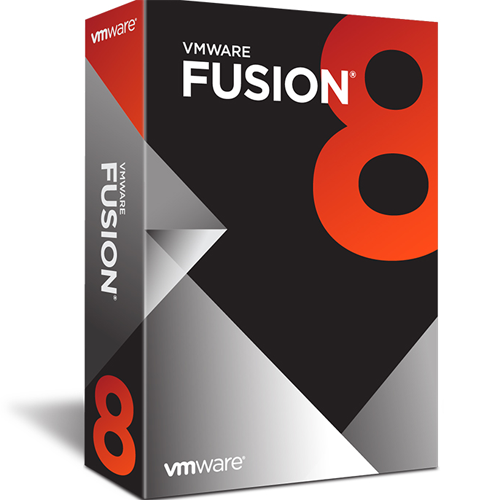

- VMWARE FUSION 8 HOW TO
- VMWARE FUSION 8 MAC OS X
- VMWARE FUSION 8 INSTALL
- VMWARE FUSION 8 UPGRADE
- VMWARE FUSION 8 FULL
Parallels Desktop customers can upgrade to VMware Fusion 8 or VMware Fusion 8 Pro and save 40%! Learn more here.ĭownload a free trial at the VMware Fusion trial page.
VMWARE FUSION 8 MAC OS X
VMware Fusion 6 and 7 customers can upgrade to VMware Fusion 8 for only $49.99 and to VMware Fusion 8 Pro for $119.99 at the VMware online store. Download VMware Fusion 8 and let your Mac run Windows, Linux or Mac OS X Server.

VMWARE FUSION 8 HOW TO
Qualifying customers will automatically receive an email advising how to upgrade their license keys. VMware Fusion 8 Pro is also available from VMware partners and distributors.Ĭustomers who have purchased VMware Fusion 7 or VMware Fusion 7 Pro between Jand Augare eligible for an electronic upgrade to VMware Fusion 8 or VMware Fusion 8 Pro at no additional cost. VMware Fusion 8 and VMware Fusion 8 Pro are available immediately for download and purchase from for $79.99 and $199.99 respectively. With deeper integration into VMware vSphere, Fusion 8 Pro now provides more detail than every before, and can even create remote virtual machines on ESXi or vCenter Server instances. To help users get started, we’re happy to provide more then enough service credit to get users exploring what they can do with a compatible cloud. Use it to connect with remote virtual machines running in vCloud Air, or even upload an existing virtual machine from Fusion for backup to the cloud. Build an app or web server locally and push it to the cloud with a simple drag and drop. Use vCloud Air, the public cloud service by VMware, to upload workloads to the cloud for public consumption.
VMWARE FUSION 8 INSTALL
– Test the latest OS X release in a virtual machine to see what’s coming around the corner, or jump in with both feet and install OS X El Capitan on your Mac with the confidence that VMware Fusion 8 will still deliver the ultimate Windows on Mac experience.Īll New Enhanced Graphics Engine with DirectX 10 and OpenGL 3.3Įveryday applications are smoother and more fluid, with new DirectX 10 only applications now supported.Ħ5% OpenGL Performance improvement and 15% DirectX 9 Performance improvementīuilt for the latest Macs including the iMac Retina 5Kĭrive 14 million pixels with VMware Fusion 8 on the most powerful and beautiful iMac to date.īuilding upon this great release, Fusion 8 Pro additionally delivers: Cortana even works when Fusion is in the background Use all the exciting new features like the Microsoft Edge browser, or Cortana the always-on digital assistant.
VMWARE FUSION 8 FULL
– Fusion 8 and Fusion 8 Pro provide full support for Windows 10. These releases mark a milestone achievement for our team within VMware, with fantastic new features and improvements in several areas including: Here is a direct link to the ISO which is located on this download page.Īfter downloading the ISO, we’ll begin by creating the virtual machine.Today we are pleased to announce the worldwide availability of the VMware Fusion 8 and VMware Fusion 8 Pro. A cluster with one or more ESXi 6.7 hosts added to it.įor this tutorial we need to download the Ubuntu Server 18.04 ISO image.The first ESXi VM also contains the vCenter Server Appliance.The first ESXi VM contains a pfSense firewall VM with built in DNS Resolver.The VM can be deployed to local storage and the standard vSwitch DMZ port group can be used.Īfter completing the steps in the previous tutorials, you will be at a point where you have: Parts 5, 6 and 7 are not required to follow this tutorial. Part 4: Adding ESXi Hosts to a Cluster in vCenter.Even before Apple switched from using PowerPC to Intel processors in its Macs, it was possible to. Part 3: Deploying vCenter Server Appliance Using Windows 8 under VMWare Fusion Part 1: Installation.Part 2: Deploy and Configure a pfSense VM.Ideally you should have read the previous tutorials in the series before following the steps in this tutorial. Create firewall rules to allow HTTP and HTTPS to the DMZ.Create a firewall rule to block DMZ traffic to the LAN.Create a firewall rule to allow DMZ traffic out.Create a NAT rule to forward traffic from 198.18.0.11 to 10.1.2.11.Add an external IP to the pfSense firewall of 198.18.0.11.Assign the VM to the DMZ network and give it an IP of 10.1.2.11.Create a Ubuntu 18.04 VM and install NGINX on it.In this tutorial, we’ll create a virtual web server and use pfSense to forward traffic to it. This is the last part in a series of tutorials on how to build a VMware vSphere Virtual Lab on a Mac with VMware Fusion.


 0 kommentar(er)
0 kommentar(er)
